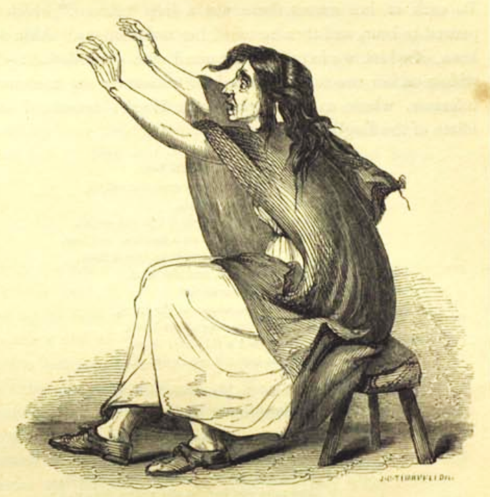|
Thomas Bray (bishop)
Thomas Bray D.D. (5 March 1749 – 15 December 1820) was an Irish Roman Catholic prelate who served as the Archbishop of Cashel from 1792 to 1820. Dr Bray was ordained to the priesthood on 22 May 1774 at Paris. Life Thomas Bray was born in Fethard, County Tipperary in 1749, to John and Margaret Power Bray. John Bray was a wine merchant. Margaret's brother, James, was a canon at Cassels in Flanders, who also served as chaplain to the French Ambassador at Rome. James owned property near Avignon and helped pay for the education of his sister's many children. Thomas Bray studied at Avignon, at the Collegio Urbano, and in Paris, where he was ordained in 1774. In 1779 he became a parish priest in Cashel; in 1782, he was appointed one of two vicar-generals for the Archdiocese of Cashel. In 1792, he was appointed to succeed James Butler II as Archbishop of Cashel. Bray used a bequest from Archbishop Butler to establish the Presentation convent in Thurles. In 1800, the Archbishop ... [...More Info...] [...Related Items...] OR: [Wikipedia] [Google] [Baidu] |
Most Reverend
The Most Reverend is a style applied to certain religious figures, primarily within the historic denominations of Christianity, but occasionally in some more modern traditions also. It is a variant of the more common style "The Reverend". Anglican In the Anglican Communion, the style is applied to archbishops (including those who, for historical reasons, bear an alternative title, such as presiding bishop), rather than the style "The Right Reverend" which is used by other bishops. "The Most Reverend" is used by both primates (the senior archbishop of each independent national or regional church) and metropolitan archbishops (as metropolitan of an ecclesiastical province within a national or regional church). Retired archbishops usually revert to being styled "The Right Reverend", although they may be appointed "archbishop emeritus" by their province on retirement, in which case they retain the title "archbishop" and the style "The Most Reverend", as a courtesy. Archbishop Desm ... [...More Info...] [...Related Items...] OR: [Wikipedia] [Google] [Baidu] |
Keening
Keening (Irish: Caointeoireacht) is a traditional form of vocal lament for the dead in the Gaelic Celtic tradition, known to have taken place in Ireland and Scotland. Keening, which can be seen as a form of sean-nós singing, was performed in the Irish and Scottish Gaelic languages (the Scottish equivalent of keening is known as a coronach). Keening was once an integral part of the formal Irish funeral ritual, but declined from the 18th century and became almost completely extinct by the middle of the 20th century. Only a handful of authentic keening songs were recorded from traditional singers. Etymology "Keen" as a noun or verb comes from the Irish and Scottish Gaelic term ("to cry, to weep"), as well as ("gentleness, pleasantness, beauty"), and references to it from the 7th, 8th, and 12th centuries are extensive. Probably at the origin of "couiner" in French. Melody and text The tune and lyrics rely on the repetition of a couple of basic motifs which can be variably e ... [...More Info...] [...Related Items...] OR: [Wikipedia] [Google] [Baidu] |
19th-century Roman Catholic Archbishops In Ireland
The 19th (nineteenth) century began on 1 January 1801 ( MDCCCI), and ended on 31 December 1900 ( MCM). The 19th century was the ninth century of the 2nd millennium. The 19th century was characterized by vast social upheaval. Slavery was abolished in much of Europe and the Americas. The First Industrial Revolution, though it began in the late 18th century, expanding beyond its British homeland for the first time during this century, particularly remaking the economies and societies of the Low Countries, the Rhineland, Northern Italy, and the Northeastern United States. A few decades later, the Second Industrial Revolution led to ever more massive urbanization and much higher levels of productivity, profit, and prosperity, a pattern that continued into the 20th century. The Islamic gunpowder empires fell into decline and European imperialism brought much of South Asia, Southeast Asia, and almost all of Africa under colonial rule. It was also marked by the collapse of the large ... [...More Info...] [...Related Items...] OR: [Wikipedia] [Google] [Baidu] |
18th-century Roman Catholic Archbishops In Ireland
The 18th century lasted from January 1, 1701 ( MDCCI) to December 31, 1800 ( MDCCC). During the 18th century, elements of Enlightenment thinking culminated in the American, French, and Haitian Revolutions. During the century, slave trading and human trafficking expanded across the shores of the Atlantic, while declining in Russia, China, and Korea. Revolutions began to challenge the legitimacy of monarchical and aristocratic power structures, including the structures and beliefs that supported slavery. The Industrial Revolution began during mid-century, leading to radical changes in human society and the environment. Western historians have occasionally defined the 18th century otherwise for the purposes of their work. For example, the "short" 18th century may be defined as 1715–1789, denoting the period of time between the death of Louis XIV of France and the start of the French Revolution, with an emphasis on directly interconnected events. To historians who expand the ... [...More Info...] [...Related Items...] OR: [Wikipedia] [Google] [Baidu] |

